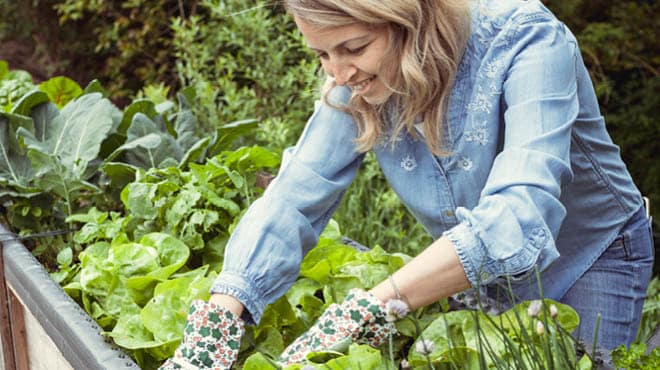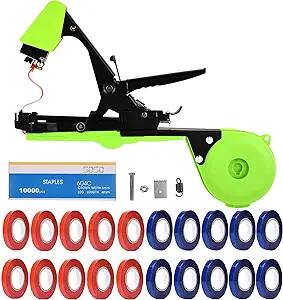The Comprehensive Guide to Horticulture: Discover the Benefits of Various Designs and Methods
Gardening encompasses a varied array of designs and approaches, each offering unique benefits customized to private preferences and environmental contexts. As we check out these different designs, it becomes noticeable that the selections made can substantially affect both the garden's wellness and its contribution to the surrounding atmosphere.
Understanding Horticulture Basics
Recognizing the basics of horticulture is crucial for cultivating a thriving and lasting garden. A successful horticulture endeavor starts with a solid structure of knowledge relating to soil, plant choice, and climate considerations. Healthy soil is the keystone of any garden; it gives vital nutrients, water retention, and an environment for useful microbes - Gardening. Checking soil pH and nutrient levels can lead amendments to enhance plant growth.
Selecting the right plants is equally crucial. Recognizing their specific requirements-- such as sunshine, water, and spacing-- ensures compatibility with the regional environment and soil problems. This choice procedure must likewise consider the development behaviors and lifecycle of plants, permitting a balanced and cosmetically pleasing yard.
Additionally, reliable watering techniques are crucial. Over-watering and under-watering can both cause plant stress and anxiety and condition. Carrying out a timetable based on seasonal modifications and plant demands can enhance water effectiveness.
Popular Gardening Styles
What specifies the significance of popular horticulture designs? Among the most popular designs is the cottage garden, defined by its casual format and a lively array of flowers and veggies.
On the other hand, the official garden personifies balance and order, frequently featuring geometric patterns and thoroughly cut hedges. This style interacts elegance and refinement, with very carefully picked plants that strengthen an organized aesthetic.
The Japanese yard offers a tranquil and meditative experience, utilizing all-natural elements like water, rocks, and plants to create a relaxing setting. It concentrates on simplicity and balance, urging consideration.
Furthermore, xeriscaping has gotten popularity, especially in deserts (Gardening). It prioritizes drought-resistant plants and efficient water use, advertising sustainability while enhancing landscape appeal
Advantages of Container Gardening
Container horticulture uses a plethora of advantages that make it an attractive alternative for both novice and knowledgeable garden enthusiasts alike. One of the key advantages is versatility; containers can be positioned in various places, allowing gardeners to enhance sunshine direct exposure and develop visually attractive plans. This flexibility makes it possible to yard precede where standard in-ground horticulture might not be possible, see post such as verandas, outdoor patios, or urban environments.
Furthermore, container gardening offers much better control over soil conditions. Gardeners can personalize the soil mix to fit certain plants, guaranteeing ideal drain and nutrient availability. This is especially helpful for people residing in areas with poor or infected soil.
One more significant benefit is the lowered danger of pests and illness. Container plants can be monitored extra quickly, and any problems can be addressed without delay. Additionally, this strategy can reduce the spread of intrusive types.
Sustainable Gardening Practices
Lasting gardening techniques are vital for advertising environmental health and boosting biodiversity in our ecological communities. These techniques prioritize eco-friendly balance, source preservation, and making use of natural approaches to minimize adverse environmental impacts. By employing methods such as composting, garden enthusiasts can reduce waste while improving soil wellness, thus promoting a flourishing yard community.
Water conservation is an additional important facet of sustainable gardening. Techniques such as rainwater harvesting, drip watering, and making use of drought-resistant plants can considerably decrease water use while ensuring that plants receive sufficient wetness. Integrating native plant species into garden styles supports regional read wildlife and decreases the need for chemical fertilizers and pesticides, which can be damaging to the atmosphere.

Ultimately, sustainable gardening methods not just contribute to much healthier yards however also promote a more durable atmosphere, supplying long-term benefits to both the gardener and the bordering area.
Tips for Successful Gardening
To cultivate a successful yard, gardeners ought to prioritize cautious planning and thoughtful execution of their gardening approaches. Begin by assessing the local climate and soil problems, as these aspects significantly influence plant selection and development. Select plants that are appropriate to your setting, considering indigenous varieties that will certainly love marginal treatment.
Carrying out a well-structured layout is essential (Gardening). Use buddy planting methods to promote biodiversity and natural parasite control, while making certain each plant has appropriate area for growth. This not just enhances appearances yet additionally enhances general plant health and wellness
Routine maintenance is key to a successful yard. Develop a regular routine for watering, weeding, and fertilizing. Mulching can help preserve wetness and reduce weeds, view it now while likewise adding raw material to the dirt.
Consistently monitoring plant health and development will enable for prompt interventions. Be open to discovering and adjusting; gardening is a constant procedure that benefits from experience and testing.
Conclusion


In summary, the expedition of diverse horticulture styles and approaches reveals their multifaceted advantages, adding to both aesthetic allure and environmental health. Container horticulture offers versatility and access, while lasting methods boost environmental stewardship. By integrating different strategies and approaches, gardeners can enhance their efforts, advertise biodiversity, and develop useful exterior spaces. Inevitably, this extensive overview works as a valuable resource for cultivating effective gardening experiences, promoting a deeper link with nature and the surrounding ecosystem.